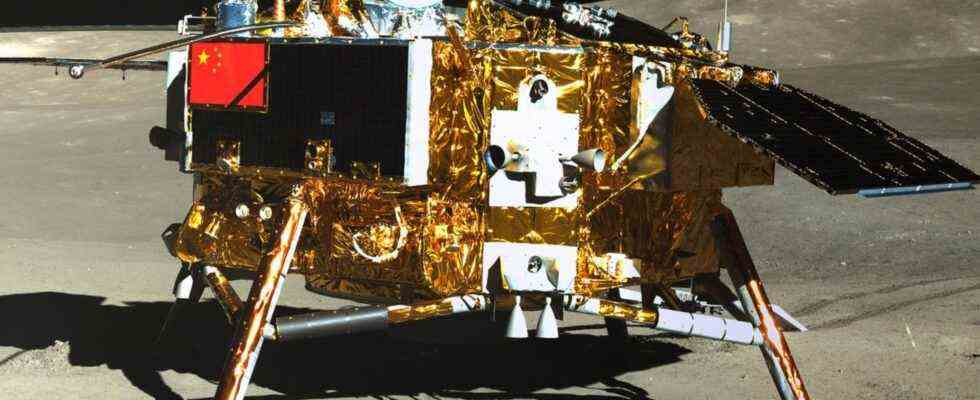Yutu-2
Chinese space probe discovers mysterious glass spheres on the far side of the moon
The landing of a Yutu-2 probe: Researchers on the space mission have now discovered glass balls on the moon that promise numerous new findings
© Jin Liwang/Xinhua News Agency/Picture Alliance
Glass balls have been found on the surface of the moon. These could bring us a lot of new insights into the formation of the celestial body.
China’s current space mission, the Yutu-2, has led to an intriguing discovery on the far side of the moon. Amid gray dust, the rover’s panoramic camera spotted two small spheres of clear glass. Such spheres can record information about the Moon’s history, such as the composition of its mantle or impact events.
So far, Yutu-2 has not been able to read concrete data from the balls, but it could still be possible in the future. Glass on the moon is not uncommon. The material forms when the silicate present on the moon is exposed to high temperatures, which is often the case, as the science portal Sciencealert summarizes.
Frequent volcanic eruptions on the moon
Historically, there have been frequent volcanic eruptions on the moon, leading to the formation of volcanic glass. Meteorite impacts also generate intense heat, which also leads to the formation of glass. The latter could be behind the orbs observed by Yutu-2, according to the science team led by geologist Zhiyong Xiao of China’s Sun Yat-sen University.
So far, however, this has to remain a guess, since most of the glass found on the moon so far looks different than the spheres discovered by Yutu-2, which are 15 to 25 millimeters in diameter, like those published via Science Bulletin present study results.
Mysterious glass spheres on the moon: is it anorthosite?
The team thinks the most likely explanation is that they were formed from volcanic glass called anorthosite, which melted on impact and then reformed into clear, round chunks. “Overall, the particular morphology, geometry, and local context of the glass beads are consistent with their being anorthositic impact glasses,” the researchers write in their paper.
All in all, the discovery offers promising opportunities for future research, the team said. As the first discovery of macroscopic and transparent glass globules on the moon, this study predicts that such globules may be abundant throughout the lunar highlands. This promises exciting further research results in order to finally uncover the early impact history of the moon – which essentially remained unknown until now.
Swell: science alert, “Science Bulletin”


